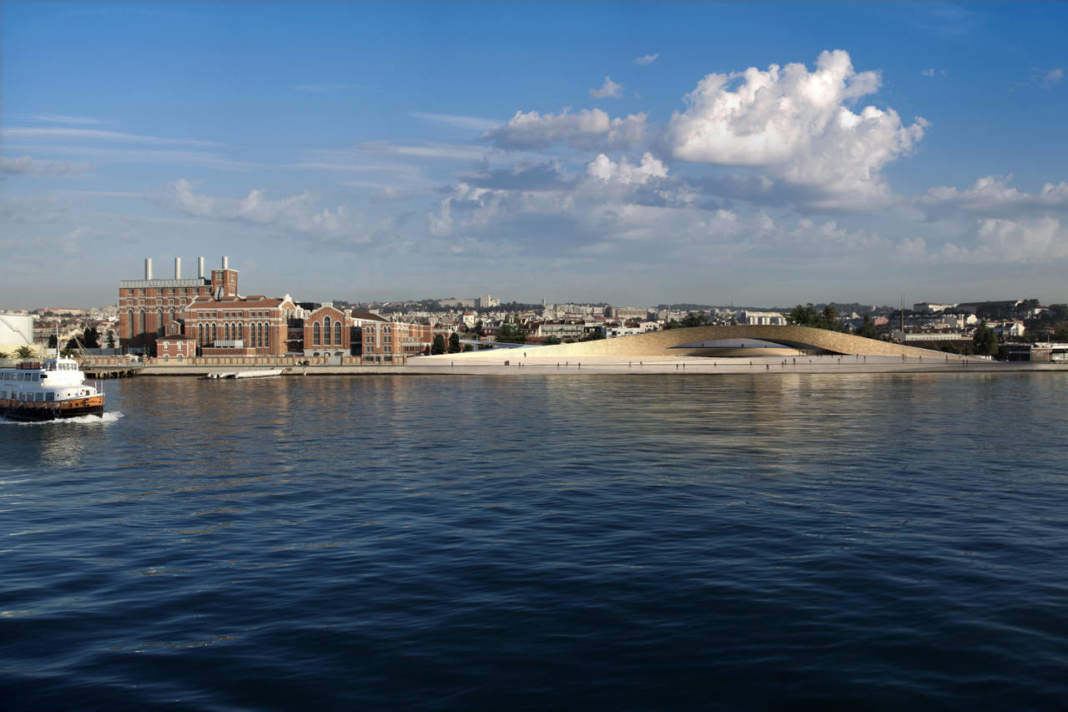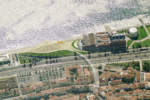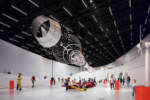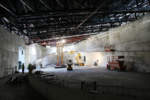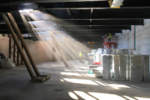architect: AL_A
location: Lisbon, Portugal
year: 2016
MAAT, is the new Museum of Art, Architecture and Technology for Lisbon that will open on the 4-5 of October 2016. The new museum will be located on the banks of the river Tagus and become the centrepiece of one of the Portuguese capital’s most popular cultural areas, the historic riverside district of Belém. The museum designed by AL_A, the internationally renowned architecture practice headed by Amanda Levete, will focus on contemporary culture through a combination of visual arts and media, architecture and city, technology and science, society and thought.

Pedro Gadanho, Director of MAAT said: "In conjunction with the existing Central Tejo power station, the new MAAT will offer a unique venue exploring the contemporary intersections of art, architecture and technology through exhibitions and programs intended for a wide audience."
The museum will repurpose an early 20th-century power station building alongside the new kunsthall designed by AL_A. The museum will host permanent science and electricity exhibits in the former power station, with a wide-ranging programme of temporary exhibitions taking place in the kunsthall. With its unique heritage, an expanding Portuguese art collection, and an innovative exhibition programme, the EDP Foundation ’s new museum will be a place for discovery, critical thinking, and international dialogue. The first exhibition will be UTOPIA/DYSTOPIA, PART 1: Dominique Gonzalez-Foerster.
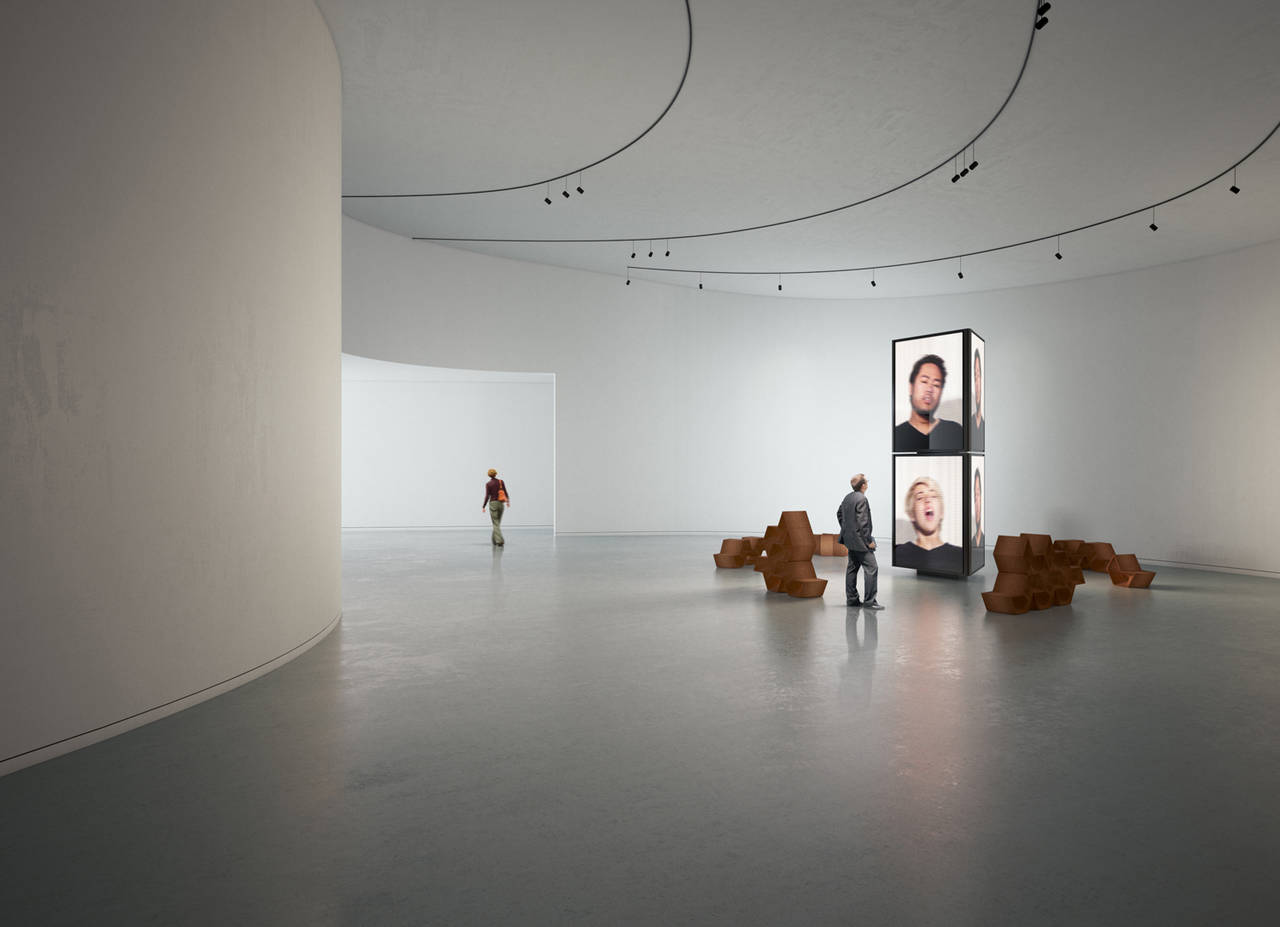
The new MAAT kunsthall building, will create exhibition spaces beneath a gracefully undulating roof, conceived to create new public space above the galleries. The project will renew access to the Belém waterfront from the city and consolidate the wider publicly-funded urban regeneration of the quarter. Incorporating over 7,000m² of new public space, the kunsthall will explore the convergence of architecture, technology and contemporary art as a field of cultural practice. It will accommodate a trans-disciplinary programme of exhibitions, public events and community engagement. As a new discursive space for the city, it will lead the conversation about the evolution of Lisbon and Portugal.
AL_A’s response exploits the natural assets of the waterfront site, framing an architectural narrative that is sensitive to both its cultural heritage and the future of the city. Inspired by Lisbon’s rich material heritage, calçada-tile pavements are subtly reinterpreted underfoot and used to merge the new public spaces with the existing texture of the city street. Building on Portugal’s rich tradition of ceramics, 3D tiles articulate the façade and produce a complex surface that gives readings of water, light and shadow, capturing and magnifying the tonal light qualities of this site.
AL_A is the award-winning architecture and design studio founded in 2009 by the RIBA Stirling Prize-winning architect Amanda Levete with Directors Maximiliano Arrocet, Ho-Yin Ng and Alice Dietsch. The practice’s approach to design balances the intuitive with the strategic, drawing on a foundation of rigorous research, innovation, collaboration and painstaking attention to detail. Ongoing commissions around the world include the highly anticipated expansion of the Victoria & Albert Museum in London, due to open in 2017.
Pedro Gadanho is the first Director of the Museum of Art, Architecture and Technology (MAAT). The architect and writer, who previously held a role as a curator in the Department of Architecture and Design at the Museum of Modern Art in New York, was appointed by MAAT in October 2015, and is responsible for the cultural programme of EDP Foundation’s new museum in Lisbon. Pedro Gadanho graduated in architecture from the Faculty of Architecture of the University of Porto (FAUP) and holds an MA in Art and Architecture from the Kent Institute of Art and Design in the UK. He holds a PhD in Architecture and Mass Media from FAUP, where he was also a lecturer. He has been a visiting professor in several European institutions, including the Barcelona Institute of Architecture (BIArch) and École Spéciale d'Arquitecture (ESA) in Paris. He was the cofounder and director of CUC, Centre for Contemporary Urban Culture, and was also a member of the strategic council of the British Pavilion at the Venice Biennial in 2010, as well as a consultant at the DAC/REALDANIA Urban Features Think Tank in 2011, in Copenhagen. In Portugal, his work has been noteworthy in a number of areas. He was the curator of the Portuguese Pavilion at the Venice Architecture Biennial in 2004, of the National Exhibition of Architecture Habitar Portugal 06-08 for the National Architecture Guild, of 100 Years of Interiors at MUDE [Museum of Design and Fashion] in Lisbon, and of public space interventions within Guimarães - European Capital of Culture 2012. Pedro Gadanho was also the editor of the magazine BEYOND, Short Stories on the Contemporary, and of the ShrapnelContemporary blog. He co-authored two television series on architecture between 2000 and 2003. He has contributed regularly to a number of international publications and catalogues.


